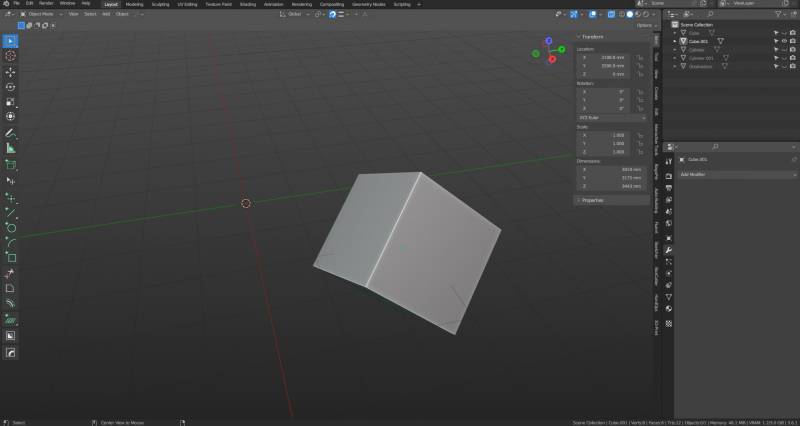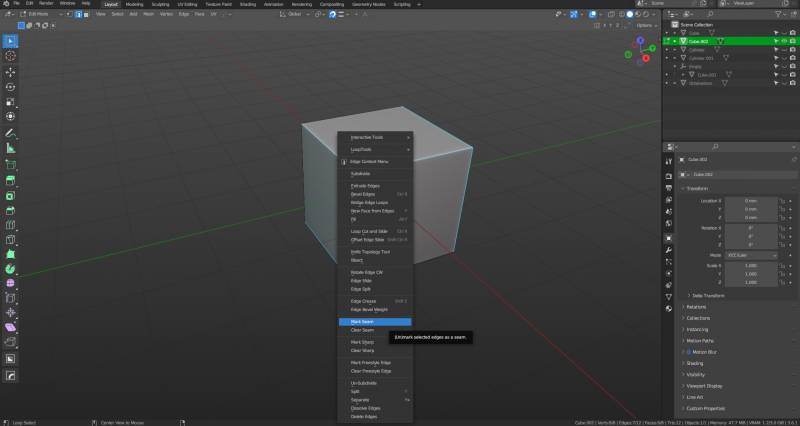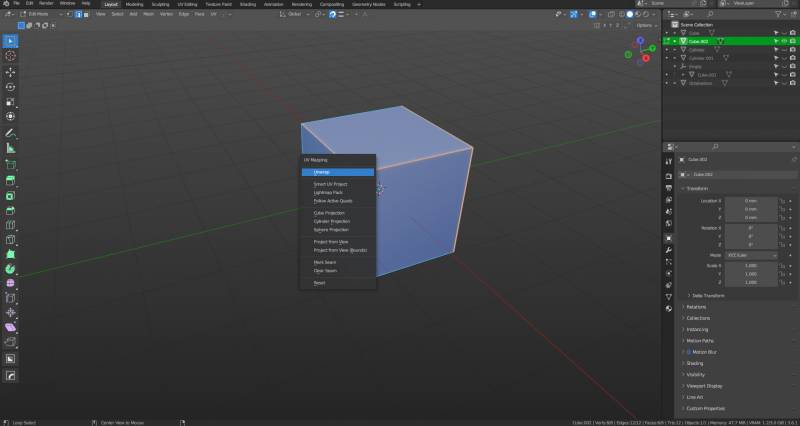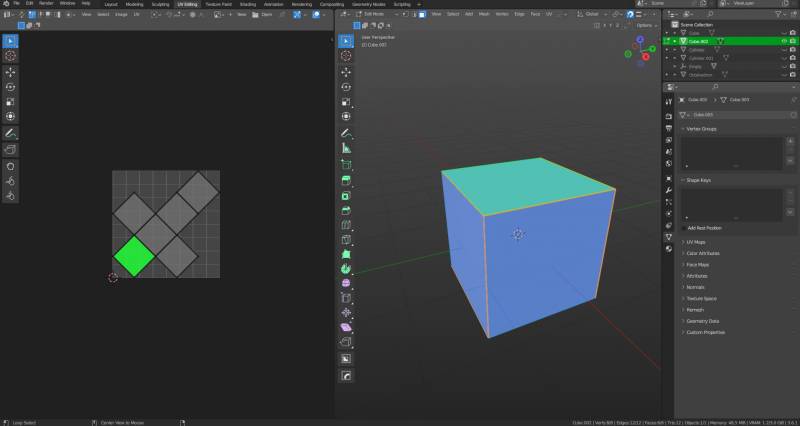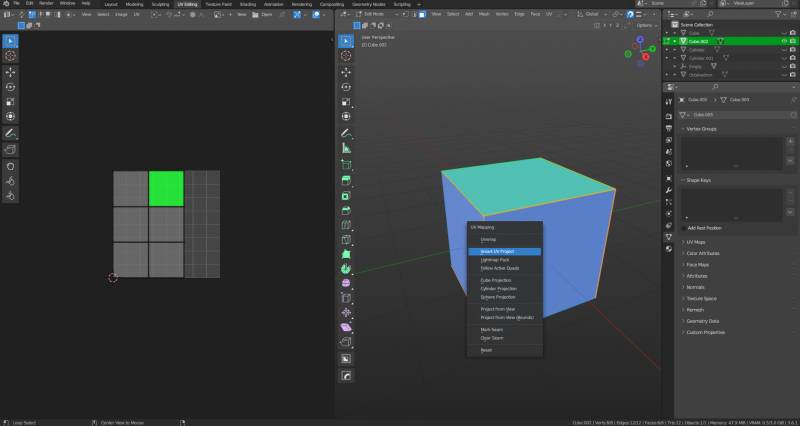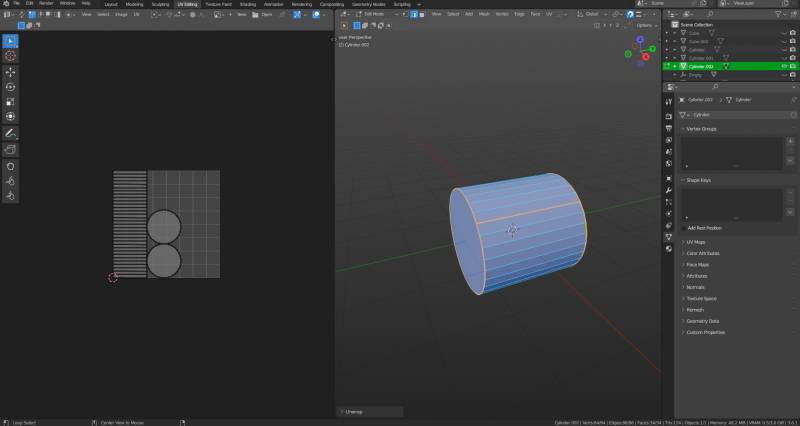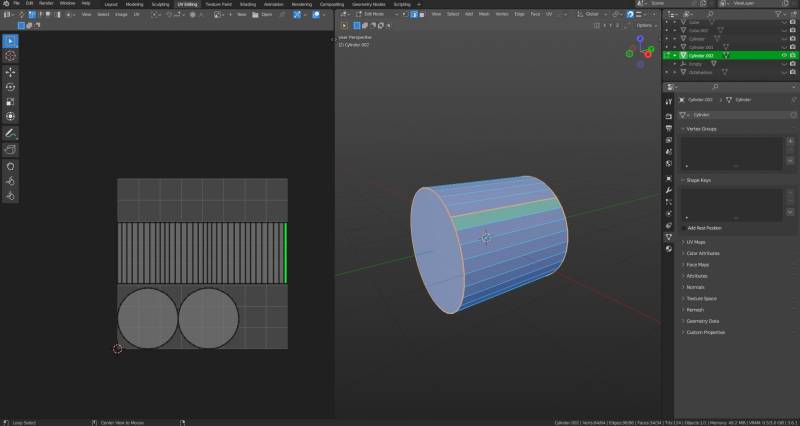Dies ist eine alte Version des Dokuments!
UV-Mapping festlegen
UV mapping is in essence a method of laying the object out flat in order to orient textures onto them.
The best appraoch is to mark sharp edges for simplicitys sake.
Enter edit mode (tab) and select the edges (2 for edge select) where the seams should be.
With the necessary edges selected, right click and select „mark seam“. This is where the model will be „split“ in UV space, and should be indicated by a different colour.
Press A to select everything on the object, then U and choose either „unwrap“ or „smart unwrap“. Depening on the model, one or the other will produce better results. In addition, smart unwrap allows you to set a cutoff angle for UVs- in other words, what degree of angle and edge can have before it is split on the UV map.
On the top row of tabs, select UV Editing. The left screen shows the object unwrapped and essentially laid flat.
By contrast, if we unwrap with „UV project“ (note: blender works as normal in the right side window, there is no need to switch workspaces), the program breaks the cube into 6 flat squares. This is because the edges of the cube are above 89 degrees, which is the highest angle limit possible to set. Whatever is above this limit, will be a seperate UV. This is not ideal for seamless textures, hence smart unwrapping is more useful for complex objects, and the angle limit must be experimented with.
The point is more obvious the example of a cylinder. If we mark seams along edges and on one edge of the cylinder, press A and then U, the normal „unwrap“ option simply cuts the mesh along the seams and lays the cylinder flat.
By contrast, this is the result of smart project. Note that the walls of the cylinder have been laid flat in 1 piece, whereas the ends are seperate UV faces. This is again because the faces which make the wall of the cylinder are below the angle set in the angle limit, and the edges on both ends are 90 degrees- above the angle limit.
Note: this result (cylinder side unwrapped in 1 conjoined piece) is ideal for most textures, since it creates the smallest possible number of noticable edges in the texture.

